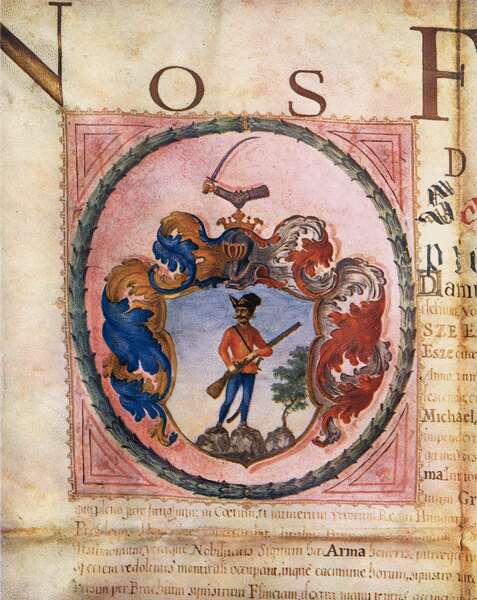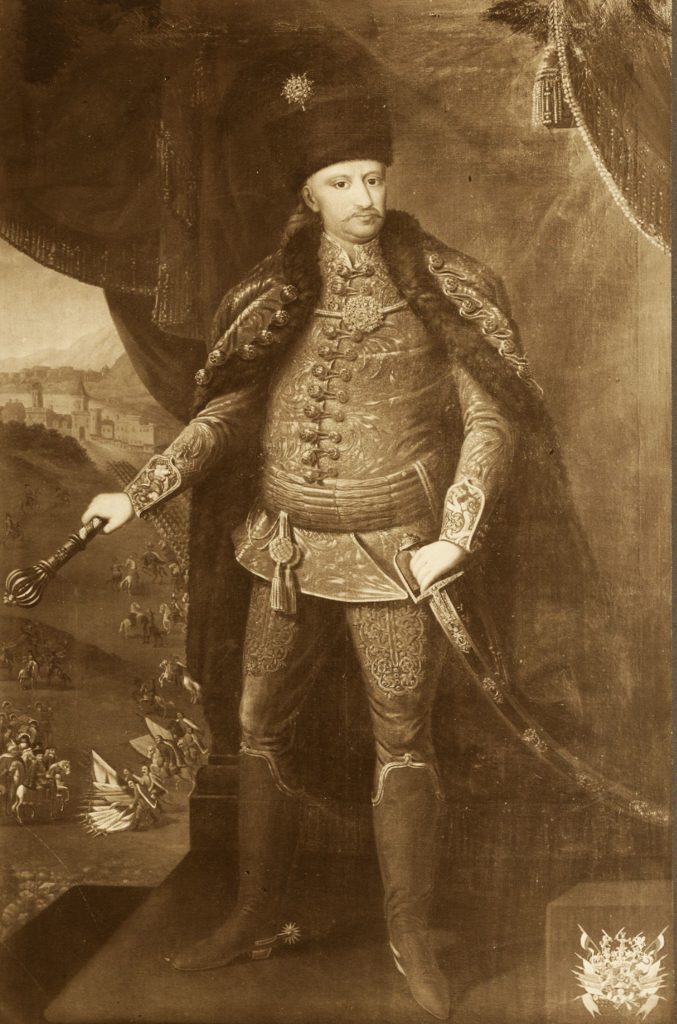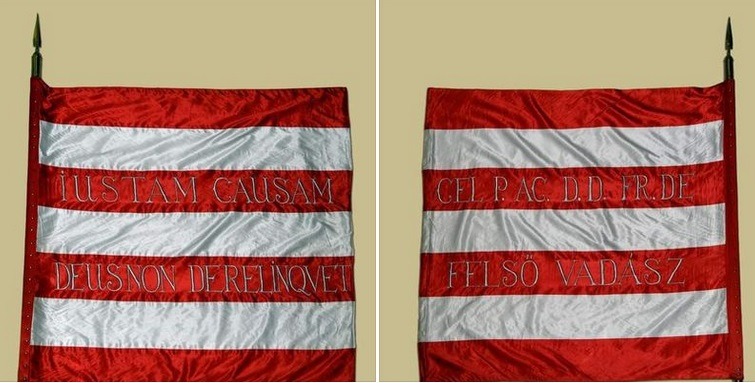Esze Tamás (Tarpa, November 30, 1666 – Nyitra camp, May 27, 1708) was a leader of the Tiszahát Uprising, a Kuruc (anti-Habsburg) brigadier general.

The Esze family probably lived in Tarpa already at the end of the 16th century. His father Esze Tamás was a wealthy peasant who owned six oxen, whose entire property also included a cow and seven pigs over one year old, and who served as a free soldier, a foot soldier for the castle of Ecsed. His mother was Márton Anna, a serf girl from Tarpa, and his wife was Bíró Anna, who was later widowed and married to Kemechey György.

We can see that Esze came from a simple serf family, he lived in Tarpa, a relatively developed market town in the Nyírség region, which received a privilege from Prince Bethlen Gábor of Transylvania and later a right to hold a fair from King Leopold I (1657-1705).

The relatively favorable situation of the region began to deteriorate with the expulsion of the Turks, as the Viennese court, having gained control of the country, suddenly wanted to enforce its centralizing ambitions. The serfs and penniless nobles, former cavalrymen, hiding in the forested borderlands of Transylvania and the Kingdom of Hungary, began to organize against the violently Catholicizing Habsburgs, and Esze Tamás of Tarpa joined them in 1696.

In the following year, the exiles led by Szalontai György and Kabai Márton started an uprising in the Hegyalja region, in which Esze took part, but he was captured by Károlyi Sándor, the then Chief Comes of Szatmár. After the uprising was crushed, he was released and started trading salt on the Tisza River. The imperial government soon monopolized the salt trade, so salt officers from Tiszaújlak confiscated his wagon and horses. Then he fled his wife to a distant relative in Debrecen and rejoined the exiles in 1701.

At the end of 1702, he joined the infantry regiment of Bagossy Pál as a recruiter together with Kis Albert, a former lieutenant of Thököly Imre. They prepared an armed insurrection under the pretext of taking part in the war against the French, but the veterans and soldiers they recruited were involved in organizing an anti-Hungarian insurrection. In the early spring of 1703, when the corps was sent to the Spanish War of Succession in the West, they fled and returned to the Bereg forests with their men, although they had no weapons.

From here Esze Tamás contacted Prince Rákóczi Ferenc II, who was staying in Poland. He did so because after long discussions he had persuaded his fellow exiles not to seek the patronage of Count Thököly Imre, unlike the uprising in Hegyalja in 1697. This decision was crucial for the later War of Independence. Esze sent two embassies to Rákóczi and Bercsényi in Brezán Castle, and after a few months of envoying, the two lords gave in to the request of the exiles, and Rákóczi decided to lead the uprising. On the third occasion, in the spring of 1703, Esze personally visited the emigrants.

Rákóczi promoted his later loyal soldier to the rank of colonel, entrusted him with the Brezán Proclamation, and handed over the flags of the uprising, which were unfurled (against the permission of Rákóczi) in three towns of Tiszahát – Vári, Tarpa, and Beregszász – on May 21 and 22. The war of independence against the Habsburg rule began, with Colonel Esze Tamás, who initially led the barefoot rebels.

At first, the nobility was alarmed, thinking that a peasant uprising had broken out since most of those who joined Esze Tamás were commoners. Esze Tamás’s troops marched to Dolha, poorly equipped, armed mostly with lance weapons (mostly straight scythes, spears, swords) and a few flintlocks and pistols of limited but inferior power.

The pro-Habsburg Károlyi Sándor ordered the mobilization and asked for further help from the imperial troops in the area. The nobles’ cavalry, joined by an imperial cavalry regiment, surprised the unprepared Tiszahát rebels at Dolha. Although Esze’s men repulsed the nobles’ attack, they were attacked in the second line by the imperial troops, who scattered them. Károlyi also captured the flags donated by Rákóczi and took them to Vienna. Despite the military defeat, the organization was not stopped and the fighting resumed with renewed vigor when Rákóczi crossed the Polish border.

He distinguished himself both for his bravery and his good military organization. In the course of the struggle, the serf commander took part in the Tisza-Transdanubian Campaign of 1703 – he took part in the battles of Tokaj, Kálló, and Szatmár, for example – and later carried out missions in the Hungarian Highlands and Transylvania. He was defending the town of Kassa (Kaschau, Kosice) in 1706.

Rákóczi always held him in high esteem: he freed him from serfdom in November 1703 and granted him the title of brigadier in 1707 and that of nobleman in March 1708. At the head of the peasants, Esze also joined Rákóczi’s campaign in Silesia planned for 1708, but he could not make it. On 27 May 1708, a fight broke out between the troops of Esze Tamás and Czelder Orbán after the Pentecost service in the camp of Nyitra castle.

Esze tried in vain to calm the crowd, but the melee escalated to the point where he had to use a grapeshot from a cannon to disperse the brawlers. After the melee, Esze Tamás was left dead on the scene, and the Kuruc army lost one of its most useful officers. Later, historians came up with several theories that the cannon fire was part of a premeditated assassination and that the brigadier was killed by his noble rivals, but it is believed that Esze Tamás’ life was probably taken by the soldiers who were fighting.

It is still unclear what conflicts in the camp in Nyitra triggered the tragic brawl. The death of his loyal soldier also shocked Rákóczi, who then placed the foot soldiers in his regiments. Esze Tamás’s hometown was granted the privilege of a Hajdú town, and his brigadier brother János was later given the rank of captain by the prince.

Dear Readers, I can only make this content available through small donations or by selling my books or T-shirts:
Please, support me with a coffee here: https://www.buymeacoffee.com/duhoxoxa
You can check out my books on Amazon or Draft2Digital, they are available in hardcover, paperback, or ebook:
https://www.amazon.com/dp/198020490X or at https://books2read.com/b/boYd81

My work can also be followed and supported on Patreon: Become a Patron!http://Become a Patron!
Become a Patron! and donations can be sent by PayPal, too: https://shorturl.at/qrQR5


https://hungarianottomanwars.myspreadshop.com/all
Subscribe to my newsletter here: https://shorturl.at/nsFZ2


